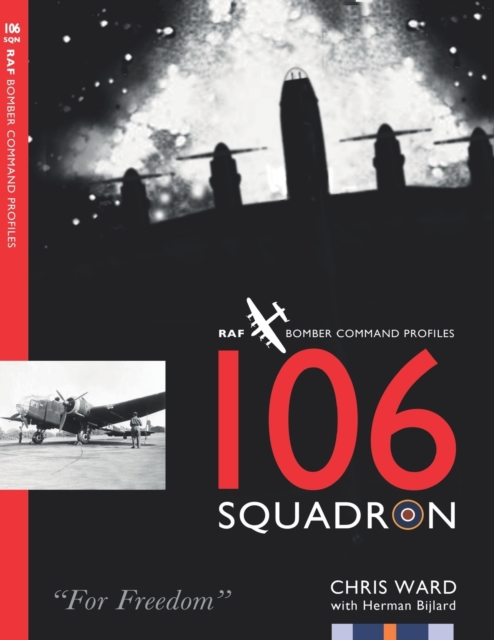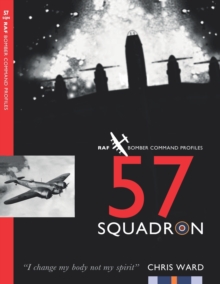
106 Squadron Paperback / softback
by Herman Bijlard, Chris Ward
Part of the Bomber Command Squadron Profiles series
Paperback / softback
Description
Formed as a bomber unit in June 1938 at Abingdon, 106 Squadron initially operated Hawker Hinds. It soon re-equipped with the Fairey Battle before receiving its first Handley Page Hampdens in May 1939. It was with this type that 106 Squadron went to war, albeit initially as a training unit with 5 Group. Its operational war did not start in earnest until the 9th of September 1940, when it joined the night bombing campaign against Germany. The Hampden was replaced in early 1942 by the Avro Manchester, which by then was approaching the end of its unspectacular service as a frontline bomber. W/C Guy Gibson took command of the squadron in March 1942, and began the process of turning it into the finest unit in the group. He was able to achieve a level of serviceability with the Manchester that was unsurpassed, although, it should be said, at a time when most of the type's wrinkles had been ironed out. Gibson was keen on innovation, and the first to completely equip his squadron with cameras to improve bombing accuracy. The Manchester was replaced by the Lancaster in May 1942, and from that point onwards the squadron participated in all of the Command's campaigns, and was often selected to take on special operations. After Gibson's departure in March 1943 to form 617 Squadron for Operation Chastise, the squadron continued to benefit from outstanding flight and squadron commanders, whose style was to lead from the front. This enabled it to remain at or near the top of the group bombing table. From the start of 1944 to the end of the war the squadron became almost the permanent owner of the 5 Group trophy for the fewest avoidable accidents. The squadron participated in many notable actions, including the first 'Thousand Bomber Raid', against Cologne in May 1942, the low-level attack on the Schneider plant at Le Creusot, Peenemunde and shuttle raids to Italy, before supporting the D-Day landings and attempting to obliterate the V1 and V2 menace in 1944. The unit ended its war with attacks against German troops holding out in Norway. Having spent time at Finningley, Coningsby and Syerston, 106 Squadron moved into the newly constructed station at Metheringham in November 1943, and remained there until it was disbanded in February 1946. The names of those who graced 106 Squadron include W/Cs Bob Allen, Guy Gibson, John Searby, Ronnie Baxter, E K Piercy and M M Stevens, along with S/L Peter Ward-Hunt, John Hopgood, David Shannon, L John Burpee and Bill Whamond. The VC of Sgt. Norman Jackson was one of 267 decorations awarded to the unit's members during the conflict. In a total of 5,834 operational sorties, the squadron was to lose 187 aircraft. Its war was hard, but heroic, its entire purpose, perhaps, best summed up by the squadron motto; Per Libertarte. (For Freedom). The memory of the airfield and those who served there is perpetuated by the Friends of Metheringham Association (FOMA) at the Visitors Centre, Westmoor Farm, Martin Moor, Metheringham.
This hardback edition is also a significant update of Chris Ward's previous 106 Squadron Profile.
Information
-
Out of stock
- Format:Paperback / softback
- Pages:470 pages
- Publisher:Aviation Books Ltd.
- Publication Date:26/04/2022
- Category:
- ISBN:9781915335005
Information
-
Out of stock
- Format:Paperback / softback
- Pages:470 pages
- Publisher:Aviation Books Ltd.
- Publication Date:26/04/2022
- Category:
- ISBN:9781915335005










